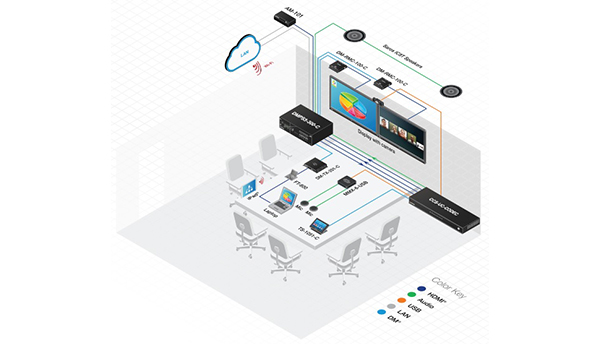
Distributed Video
Distributed video allows a single video source, such as a PC, laptop, presentation system, satellite receiver or Blu-ray player, to be shared between multiple video displays in the same or multiple rooms and locations, by connecting them to a video switch. This platform provides pretty amazing advantages. The biggest of which is minimizing the amount of sources required for every video display. For example, if there are six video displays and you would like to stream a specific video image to all six of them, you will need to have six different sources, each one requiring a separate line, fee, support and not all connected. Distributed video allows you to use just one source to feed video to all of the displays.
Another great advantage distributed video provides is the ability to hide all of the gear. No one wants to spend thousands of dollars on a gorgeous Plasma or LED TV to hang up on the wall but have a tangle of wires running down the wall and into the cabinet below where all the gear lives. Distributed video allowed us to centrally locate all of that equipment in the storage closet. Creating automation solutions that transform the way people live their lives, making their day-to-day tasks easier and improving efficiency and productivity. Working to bring technological solutions to the forefront. constantly offering faster, better solutions that address the needs of our clients.

Digital signage
Dynamic signage, is a specialized form of slivercasting in which video or multimedia content is displayed in public places for informational or advertising purposes. In digital signage solutions we use technologies such as LCD, LED, projection and e-paper to display digital images, video, web pages, weather data, restaurant menus, or text. Digital signage solutions are deployed in many sectors including public spaces, transportation systems, museums, stadiums, retail stores, hotels, restaurants, libraries, manufacturing, auto dealerships, government facilities and corporate buildings etc., to provide wayfinding, exhibitions, marketing and various advertising messages.
A network of displays provides the ability to manage one or many digital signage devices across a network from a centrally managed location to update text, animated or video messages for advertising, information, entertainment and merchandising to targeted audiences.
Video Conferencing
Video conferencing is a technology that allows users in different locations to hold face-to-face meetings without having to move to a single location together.
Remote conferencing Solutions for voice and/or video conferencing deliver consistent, life-like HD audio even in challenging environments such as large meeting spaces and conference rooms.
Advanced echo cancellation and noise suppression filter out unwanted sound, so all that is hear is the desired content.

Distributed Audio
Restaurants, fitness centers, office buildings and many other businesses rely on a specific kind of sound system. These systems are referred to as "distributed audio systems." Other names are used to refer to these systems as well, including “70-Volt Systems” and “Constant Power Systems.” What truly differentiates a distributed audio system from a standard PA system is that transformers are built into the speakers and special amplifiers are used to power the speakers properly. The speakers’ onboard electronics distribute the power from the amplifier evenly and safely.
This enables many speakers to be chained together in parallel, which in turn enables hotel staff to announce that “Elvis… has left the building.” Distributed audio systems can be as small or large as you need them to be. You can install your own system if you’re comfortable with basic speaker wiring techniques. It’s important to pay attention to details. You must make sure the power rating of your chosen amplifier can safely run the speakers in your system.




